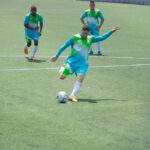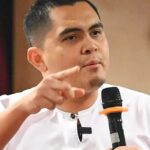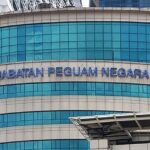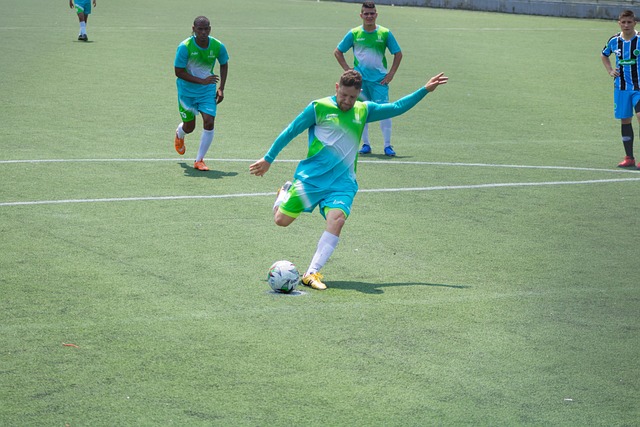As Singapore gears up for the General Election (GE2025), political parties are unveiling fresh faces to engage voters ahead of the November 23 deadline. With revised electoral boundaries released on March 11, 2025, the political landscape is buzzing with activity. This article compiles insights from two Channel NewsAsia reports and additional confirmed data, spotlighting potential candidates from the ruling People’s Action Party (PAP), The Workers’ Party (WP), Progress Singapore Party (PSP), Singapore Democratic Party (SDP), People’s Power Party (PPP), and Red Dot United (RDU). Below, we profile these emerging figures and analyze the trends and motivations behind their selection.

People’s Action Party (PAP)
David Hoe
David Hoe, a director at the Ministry of Digital Development and Information (MDDI), has been spotted in Tampines GRC alongside MPs like Masagos Zulkifli and Desmond Choo. His redeployment from Jalan Besar GRC reflects PAP’s strategic flexibility. David first appeared on the scene in Jalan Besar GRC, where he was spotted on a walkabout with MP Denise Phua in June last year.

Gabriel Lam
Gabriel Lam, head of legal at a Singapore-based shipping firm, has been engaging Tampines residents at community events. His legal background signals PAP’s intent to blend professional credentials with voter rapport.

Gho Sze Kee
Gho Sze Kee, a shipping lawyer, has been active in Mountbatten SMC with MP Lim Biow Chuan. Her grassroots involvement underscores PAP’s push for community-connected candidates.

Goh Hanyan
Goh Hanyan, a former senior director at the Singapore Economic Development Board (EDB), brings economic expertise to Tampines GRC. Her experience aligns with PAP’s focus on economic stability.

Marshall Lim
Marshall Lim, a 39-year-old lawyer and chairman of PAP’s Hougang branch since February 17, 2025, has been engaging residents in the opposition stronghold. A partner at Martin & Partners specializing in criminal law, he previously served as a deputy public prosecutor and assistant chief public defender. His first major walkabout on March 2, 2025, at Hougang Avenue 5 emphasized building local connections.

People’s Power Party (PPP)
Vere Nathan
Vere Nathan, a logistics professional, has been active in Marine Parade-Braddell Heights GRC under PPP’s banner. His candidacy highlights PPP’s ambition to challenge larger parties with relatable, working-class figures.

Progress Singapore Party (PSP)
Stephanie Tan
Stephanie Tan, a full-time housewife with a law degree from NUS, has been spotted in PSP walkabouts with founder Tan Cheng Bock. Her profile blends domestic relatability with professional credentials.

Red Dot United (RDU)
Pang Heng Chuan
Pang Heng Chuan, a former SAF Lieutenant-Colonel, has been seen in Jurong East-Bukit Batok GRC with RDU’s Ravi Philemon. His military background underscores RDU’s emphasis on discipline and leadership.

Singapore Democratic Party (SDP)
Surayah Akbar
Surayah Akbar, SDP’s treasurer and a member for over 18 years, has been engaging residents in Marsiling-Yew Tee GRC. Her long-term commitment reflects SDP’s grassroots focus.

The Workers’ Party (WP)
Andre Low
Andre Low has been seen at WP events, likely supporting efforts in constituencies like Aljunied or Marine Parade. His presence signals WP’s intent to broaden its candidate pool.

Analysis: Who’s Being Fielded and Why?
The candidates emerging for GE2025 reveal distinct patterns in party strategies, reflecting voter priorities and political realities. Here’s a breakdown of the types of individuals being fielded and the possible reasons behind their selection:
- Professional Expertise Meets Grassroots Appeal
PAP candidates like David Hoe, Goh Hanyan, Marshall Lim, and Gabriel Lam bring high-level credentials—spanning digital development, economics, and law—paired with community engagement. WP’s Linda Low, with financial and communications backgrounds, match this technocratic edge while appealing to urban voters. - Youth as a Strategic Asset
Younger candidates target Singapore’s millennial and Gen Z electorate, vocal about cost-of-living and social mobility. PAP’s Adrian Ang reflects a subtle shift to refresh its image. - Sector-Specific Credibility
Pang Heng Chuan’s military past (RDU) projects stability, and Vere Nathan’s logistics background (PPP) resonates with working-class voters. - Tactical Deployment in Contested Wards
PAP targets opposition strongholds like Hougang (Marshall Lim). WP expands into Marine Parade (Linda Low). Smaller parties like PPP (Vere Nathan) and RDU (Pang Heng Chuan) aim to capitalize on multi-cornered fights. - Diversity in Backgrounds, Unity in Purpose
The mix of public servants (David Hoe), private-sector professionals (Adrian Ang), and grassroots figures (Surayah Akbar) mirrors Singapore’s multifaceted society. PAP maintains its “big tent” approach, while opposition parties prove competence with diverse alternatives.
Possible Motivations:
- Global Uncertainty: Candidates with stability-focused skills (e.g., Pang Heng Chuan, Goh Hanyan) address geopolitical volatility.
- Voter Fatigue: Fresh faces counter stagnation perceptions, vital for PAP’s long rule and opposition’s momentum.
- Boundary Changes: Redrawn maps prompt adaptable candidates like David Hoe and Vere Nathan to build rapport in new areas.
Conclusion
Singapore’s GE2025 is a battle of renewal, with parties unveiling candidates blending expertise, youth, and local credibility. PAP reinforces its dominance with seasoned governance and new energy, while WP, PSP, SDP, PPP, and RDU challenge the status quo with relatable figures. Their profiles signal a nation seeking leaders for domestic aspirations and global challenges. The coming months will test whether these new faces can turn potential into votes.








